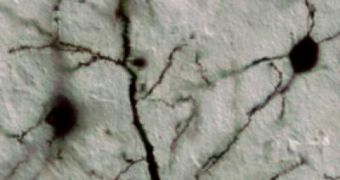A neuroscientist at the Johns Hopkins University (JHU) has recently managed to figure out the mechanisms that the mammalian brain employs in designing its own circuits. It's a well-known fact that neural pathways are among the most complex constructs in nature, and the new investigation sheds some light on how the cortex deals with creating the correct connections that it needs to function properly. The brain apparently revisits and reuses the same molecular cues to do so, the expert says, quoted by PhsOrg.
The new work was conducted on unsuspecting lab mice. It was determined that, prenatally, the protein semaphorin plays a very important part in guiding axons, the filament-like extensions of nerve cells known as neurons, to their respective targets. This helps facilitate the creation of the basic neural pathways, JHU School of Medicine neuroscience department Professor David Ginty, PhD, says. The expert, who is also a Howard Hughes Medical Institute investigator, reveals that, after birth, the same protein changes function completely, and is recruited again by the brain, but for another task.
In the first months of life, semaphorin is being used to regulate the formation of synapses, the connections between neurons, which dictate the overall “processing power” of the respective brain. “With this discovery we're able to understand how semaphorins regulate the number of synapses and their distribution in the part of the brain involved in conscious thought. It's a major step forward, we believe, in our understanding of the assembly of neural circuits that underlie behavior,” Ginty says. He adds that a number of neurological disorders, including autism and epilepsy, could get a fresh, new research perspective based on these findings.
“Seizures can be interpreted as an uncontrolled rapid-firing of certain neural circuits. Clearly there's a deficit in these animals that has a human corollary with respect to epilepsy. It's also thought that schizophrenia and autism spectrum disorders have developmental origins of one sort or another. There likely are aspects to the formation of synapses – if they're not in the correct location and in the correct number – that lead to certain types of defects,” Alex Kolodkin, PhD, also a professor in the JHU neuroscience department, says.

 14 DAY TRIAL //
14 DAY TRIAL //